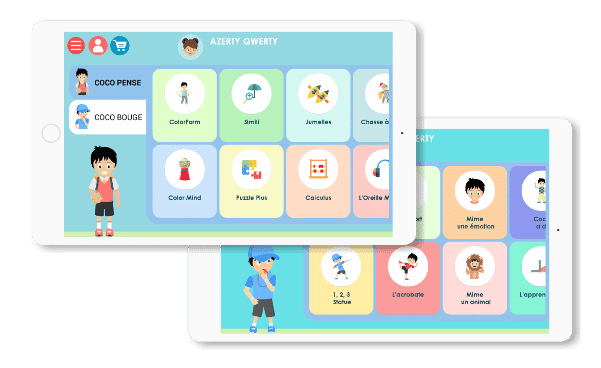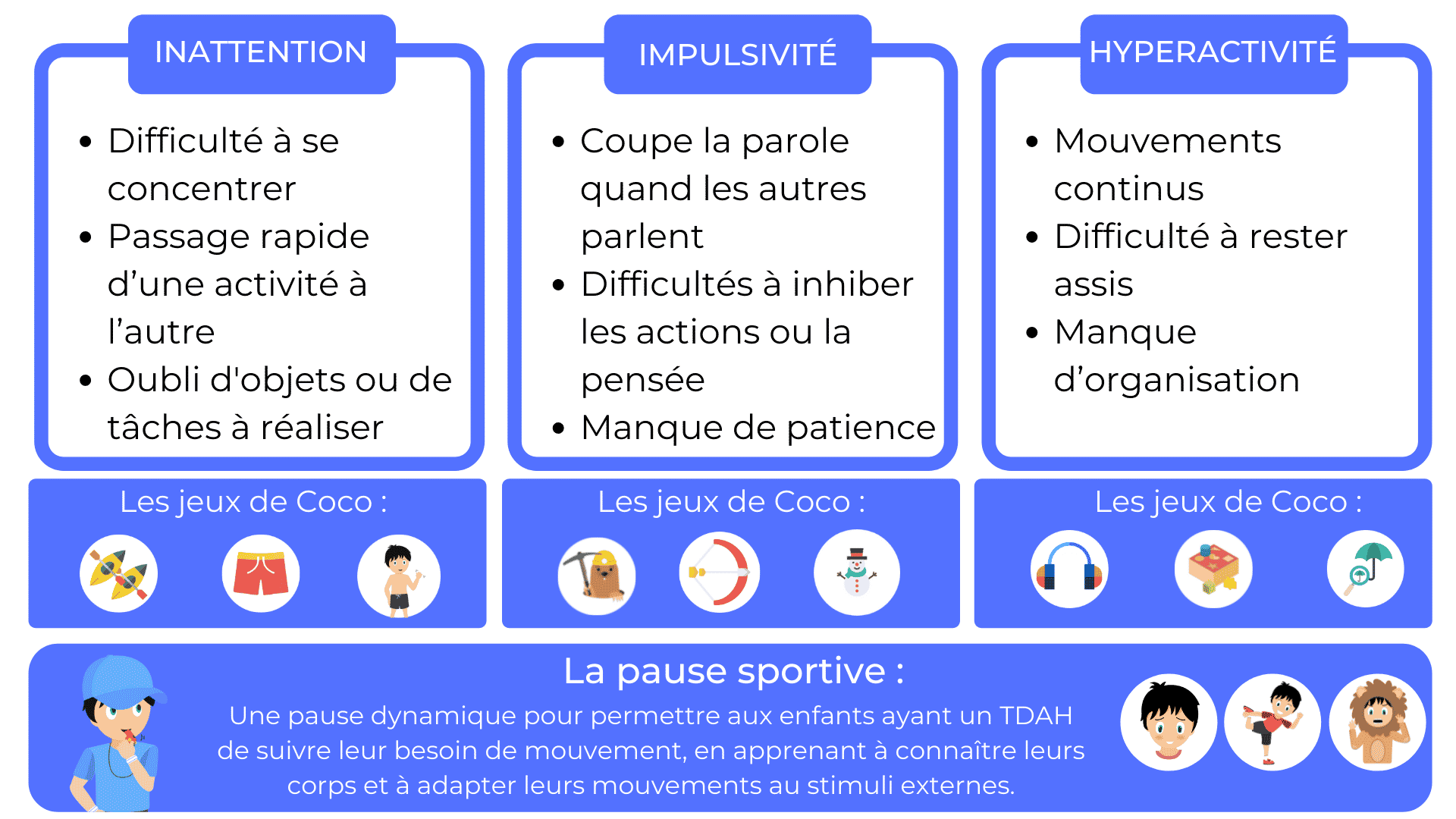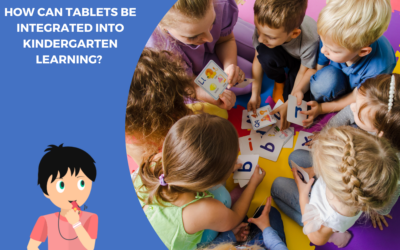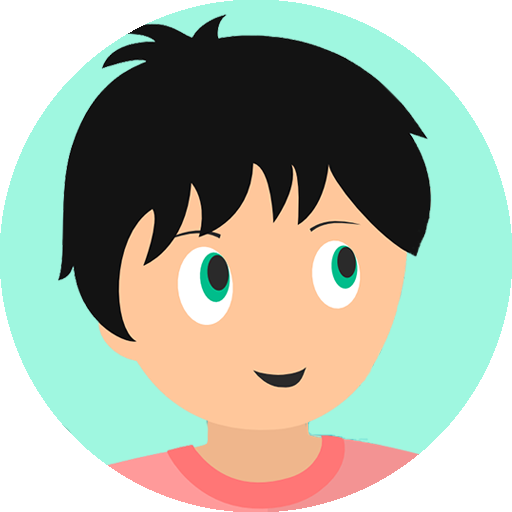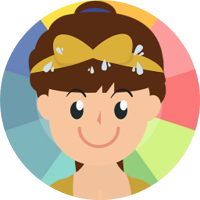Hyperactivity and Attention Deficit Hyperactivity Disorder (ADHD) are medical conditions that affect many children. These disorders can have a significant impact on the daily lives of affected children, as well as on their families and education.
Hyperactivity, ADHD and intrusive thoughts
Hyperactivity is a term often used to describe children who are constantly on the move, have trouble sitting still in class, and seem restless. However, ADHD is a more complex medical condition that encompasses not only hyperactivity, but also attention deficit and impulsivity. Children with ADHD have trouble concentrating, following instructions and controlling their impulses.
Hyperactivity and intrusive thoughts are challenges that many children face. In this article, we’re going to delve into the heart of these issues to understand them better. We’ll look at what Attention Deficit Hyperactivity Disorder (ADHD) is and how it manifests itself. We’ll also take a closer look at intrusive thinking, its definition and its effects on children. Finally, we’ll look at the crucial importance of recognizing the signs and symptoms associated with these disorders.
What is ADHD and how does it manifest itself?
ADHD is a common neurodevelopmental disorder in children. It is characterized by three main symptoms:
- Hyperactivity: Children with ADHD are often restless, have trouble sitting still and are constantly on the move.
- Attention deficit: They have difficulty concentrating on time-consuming tasks, following instructions and finishing what they’ve started.
- Impulsivity: They tend to act without thinking through the consequences.
Intrusive thoughts: examples and effects on children
Intrusive thoughts are unwanted, recurring thoughts that invade a person’s mind. In children with ADHD, these thoughts can be particularly disturbing. They take the form of excessive worry, incessant doubts, or even disturbing images, which can aggravate ADHD symptoms by further disrupting their concentration and emotional well-being.
These thoughts can vary depending on the individual, but here are some examples of intrusive thoughts that could affect a child with ADHD:
- Excessive worry: The child may have recurrent, anxious thoughts about upcoming situations, such as school exams, social activities or family events.
- Self-criticism: The child may have constant negative thoughts about himself, questioning his own worth or always feeling at fault.
- Repeating embarrassing memories: He may be obsessed with embarrassing moments from the past, replaying these memories over and over in his head.
- Thoughts of clutter and organization: Children with ADHD may struggle to get organized, and intrusive thoughts about clutter or forgetting important tasks may plague them.
- Mental compulsions: Children with ADHD may develop obsessive thoughts around mental rituals, such as repeatedly checking things, even when it’s not necessary.
- Inappropriate impulses: The child may have thoughts about impulsive behavior, such as saying something inappropriate at an inopportune time.
- Shocking images or thoughts: Violent or shocking images or thoughts can sometimes arise, even if the child doesn’t want them at all.
- Health worries: Obsessive thoughts about health, such as the fear of getting sick, can be frequent.
- Distracting thoughts: Intrusive distracting thoughts can make it difficult for a child to concentrate on a task.
- Repetition of words or phrases: Children may find themselves mentally repeating words or phrases endlessly.
It is essential to note that intrusive thoughts can vary considerably from one person to another, and they are not specific to ADHD. If you are concerned about the intrusive thoughts of a child with ADHD, it is important to consult a mental health professional or psychologist for appropriate assessment and advice on managing these thoughts.
The impact of intrusive thoughts on children with ADHD
An often overlooked aspect of ADHD is the existence of intrusive thoughts. These unwanted and persistent thoughts can disrupt the concentration and emotional well-being of children with ADHD. Intrusive thoughts can take the form of constant worries, doubts, or troubling images, making it even more difficult to manage ADHD symptoms.
My name is Sarah, and I’m the mom of a wonderful 9-year-old boy, Alex, who was diagnosed with ADHD a few years ago. One of the most important things I’ve learned as a parent of a child with ADHD is to understand and anticipate my son’s intrusive thoughts to help him stay calm.
Alex often has thoughts that seem to come out of nowhere, and they can sometimes upset him. One of his most common intrusive thoughts is thinking he’s done something wrong, even when he hasn’t. He may be sitting at the table doing his homework, and suddenly say, “Mom, I think I forgot to do something wrong at school today.” This thought can make him panic, even though I know he hasn’t done anything wrong.
To help her cope with these thoughts, I’ve developed a few strategies. First, I taught him to recognize these thoughts. When he expresses them, I tell him they’re just intrusive thoughts, and don’t reflect reality. This gives him some distance from these thoughts and helps him to identify them when they arise.
Next, together we created a “quiet space” in his room. It’s a corner where he can retreat when he feels overwhelmed by these thoughts. There are cushions, a soft lamp and her favorite toys. When he starts to feel anxious about his thoughts, I tell him he can go to his quiet space to recharge his batteries. This gives him a concrete way of managing his anxiety.
Finally, we worked together on breathing and meditation techniques. We have a small daily session where we sit together, close our eyes, and practice deep breathing. This helps her to calm down and focus on the present moment rather than her intrusive thoughts.
Of course, there are still difficult moments, but by understanding my son’s thoughts and putting these strategies in place, we’ve been able to give him the tools he needs to cope with his ADHD and intrusive thoughts. I’m extremely proud of the way he’s growing and learning to manage his emotions, and I know his future is bright. Support, love and understanding are essential to helping our children with ADHD succeed.
The importance of recognizing signs and symptoms
Recognizing the signs of ADHD and intrusive thoughts is essential for early intervention. Signals can vary from child to child, but generally include academic difficulties, relationship problems and impulsive behavior. The sooner these challenges are identified, the sooner appropriate solutions can be put in place to help the child better manage his or her symptoms.
By understanding hyperactivity and intrusive thoughts, we are better equipped to support children who suffer from them. It’s essential to recognize the signs of ADHD and intrusive thoughts, and to explore suitable solutions, including programs like “Coco Pense et Bouge,” which offer tools to help these children improve their quality of life.
I’m John, the father of an incredible daughter, Emily, who was diagnosed with ADHD at the age of 7. One of the most important things my wife and I have learned is to identify our daughter’s intrusive thoughts and help her overcome them.
A concrete example that comes to mind concerns Emily’s fear of natural disasters. She’s obsessed with earthquakes and hurricanes, and constantly fears that something terrible is going to happen. Sometimes she wakes up at night crying, convinced that an earthquake is about to strike.
When my wife and I noticed this obsession, we started talking to Emily to better understand her thoughts. One night she came to us and said, “Dad, I can’t sleep. I think there’s going to be an earthquake and everything’s going to fall apart.” It was clearly an intrusive thought that tormented her.
The first thing we did was to explain to him that these were intrusive thoughts, i.e. thoughts that came from his brain but weren’t necessarily true. We assured her that we were there to reassure her and help her manage her fears.
Then we drew up a plan. We set up a “safety box” in his room. The box contained a flashlight, cookies, a soft blanket and a letter that my wife and I had written for her. We explained that if she felt frightened at night because of her thoughts, she could open the safety box. The letter reminded her that we loved her, that we were there to protect her, and that the scary thoughts were just “nasty little lies” her brain was telling her.
We also introduced a relaxation routine before bedtime. We taught her to breathe deeply and focus on soothing images, like gentle waves at the beach, to help calm her anxious mind.
Over time, Emily began to use the safety box less frequently, and she felt more in control of her intrusive thoughts. Of course, there are still difficult moments, but by working together as a family, we’ve been able to help Emily overcome some of her most pervasive fears.
Spotting our daughter’s intrusive thoughts and providing her with tools to manage them has been a learning experience for us as parents, but it’s rewarding to see how resilient and able she is to cope with these challenges. We know that unconditional support and understanding are essential to helping our children with ADHD succeed.
The “Coco Pense et Bouge” Program: A Solution to Combat Intrusive Thoughts
Intrusive thoughts can have a devastating impact on the lives of children with ADHD. Fortunately, the “Coco Pense et Bouge” program offers an innovative solution to help these children overcome these challenges.
What is “Coco Pense et Bouge”?
“Coco Think and Move” is a program specially designed for children with ADHD who struggle with intrusive thoughts. It offers a holistic approach to helping these children understand, manage and reduce their unwanted thoughts. The program combines elements of cognitive-behavioral therapy, physical activity and relaxation techniques to help children develop essential skills for coping with their intrusive thoughts.
I am Dr. Karen Wilson, clinical psychologist, and I’d like to share my views on a tool that I find particularly effective in helping children with ADHD to combat intrusive thoughts. The program is called “Coco Pense et Coco Bouge” (Coco Thinks and Coco Moves), and it has a proven track record in managing intrusive thoughts.
ADHD is a complex disorder that can lead to a variety of challenges, including intrusive thoughts. These thoughts can make daily life difficult for children with ADHD, as they can distract them, make them anxious and disrupt their concentration. That’s why a program like “Coco Pense et Coco Bouge” is so valuable.
“Coco Pense et Coco Bouge” is an ADHD management program that focuses on learning self-regulation and emotion management skills. It’s based on the idea that children with ADHD can learn to recognize and manage their intrusive thoughts, while developing strategies to stay focused and calm.
One of the most powerful aspects of this program is that it uses visual and interactive techniques to help children understand their own thought processes. The “Coco Pense” and “Coco Bouge” characters represent the two facets of ADHD: impulsivity and hyperactivity on the one hand, and inattention and intrusive thoughts on the other. Children learn to recognize when “Coco Thinks” takes over, and how to get “Coco Moves” to regain control.
The program also teaches practical strategies, such as mindfulness meditation, deep breathing and task planning, to help children manage intrusive thoughts and refocus. It also encourages open communication between children and their parents, so that the whole family can support the process.
As a psychologist, I have seen encouraging results in many children who have followed this program. They are more aware of their thoughts and emotions, which enables them to manage them better. They also develop greater confidence in themselves and in their ability to cope with the challenges of ADHD.
Of course, every child is unique, and treatment must be tailored to his or her specific needs, but I firmly believe that “Coco Pense et Coco Bouge” is a valuable tool in the fight against intrusive thoughts in children with ADHD. It provides a structured and engaging framework for learning skills essential to managing ADHD and improving the quality of life of these children.
The benefits of the Coco program for ADHD children
Here are some useful games and features for hyperactive and ADHD children.
COCO PENSE educational games to work on inattention, impulsivity and hyperactivity
Many of the games in the program are particularly well-suited to the task, including Cascade infernale, l’invasion des maupes, Bloc en folies, Jumelles, Simili, Suite infernale, Coco à la plage, Effet boule de neige and Perce Ballons.
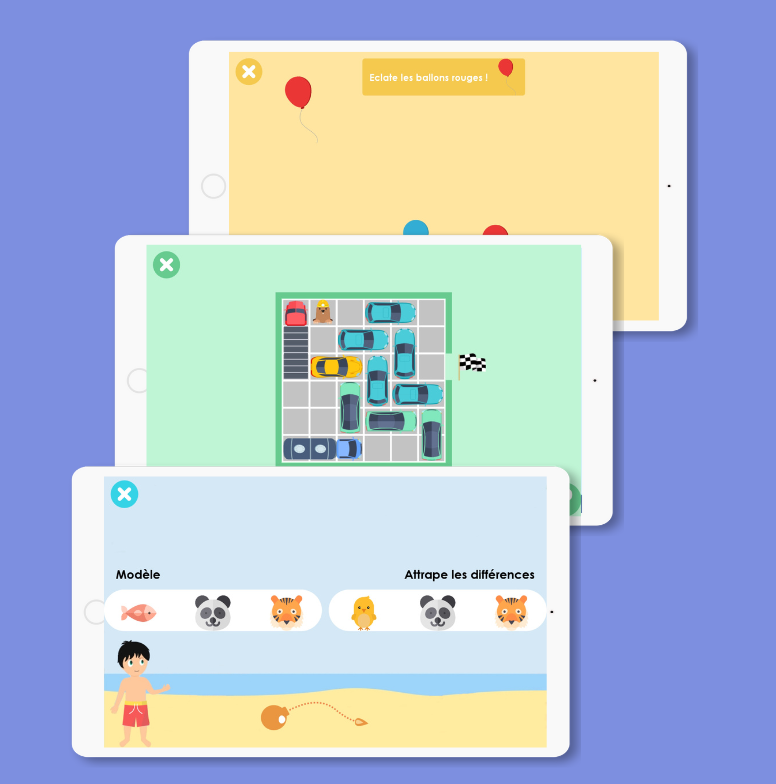
The Quiet Time game
This game encourages children to take the time to breathe in and out, to take regular breaks to refocus and relax. It offers relaxation and breathing activities to help calm intrusive thoughts.
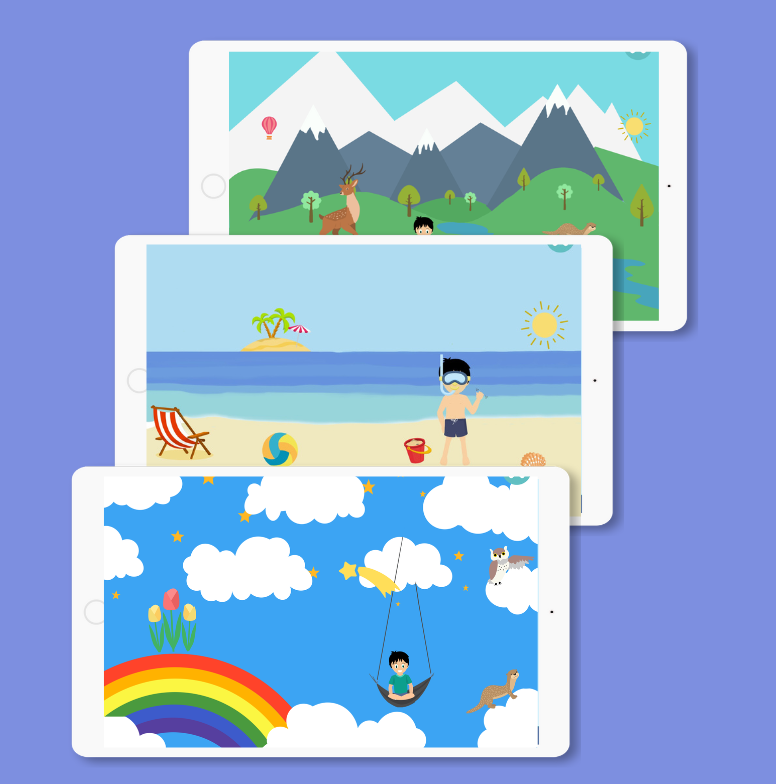
The game Mimes an emotion
This game helps children develop their emotional awareness by enabling them to mime and express their emotions in a playful way. It helps to understand emotions and manage impulsive reactions.
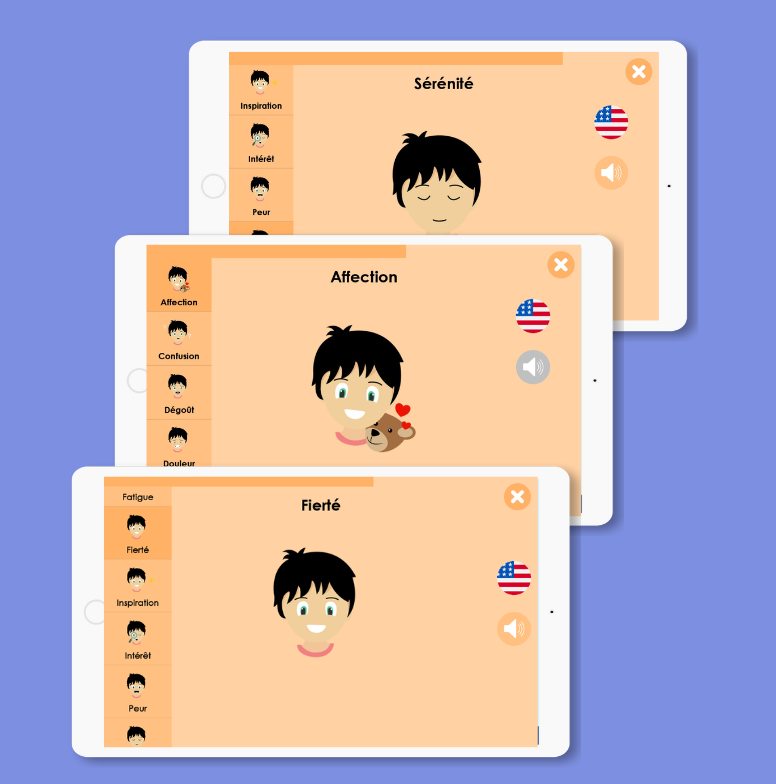
Sports break every 15 minutes of screen time
To counter hyperactivity, this program offers a sports break every 15 minutes of screen time. These short sessions of physical activity help release excess energy, which can help reduce restlessness and intrusive thoughts.
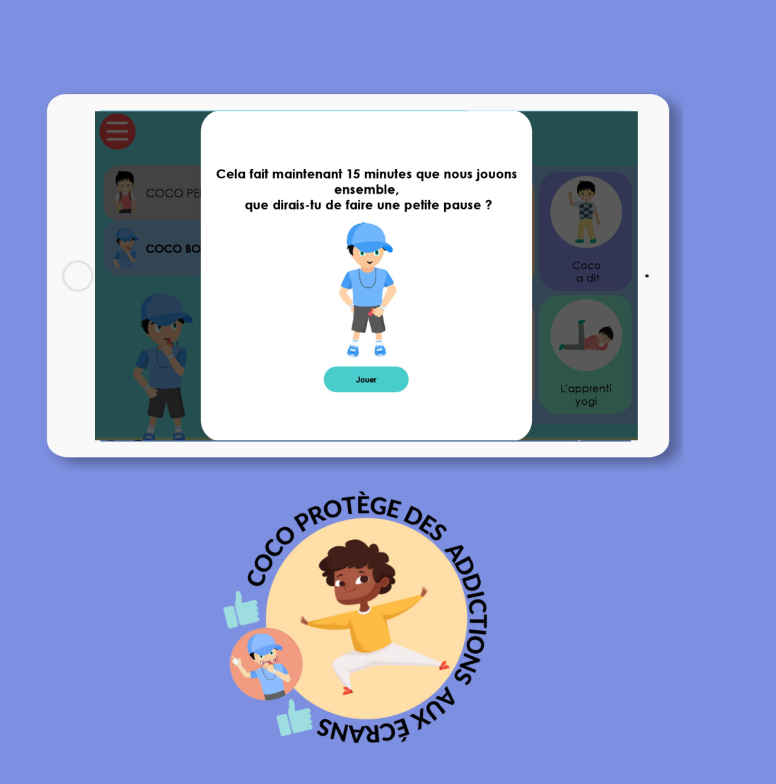
Visualizing games for ADHD children
COCO PENSE offers visualization tools to help children focus and manage their thoughts. Visualization exercises can be used to calm the mind and promote concentration.
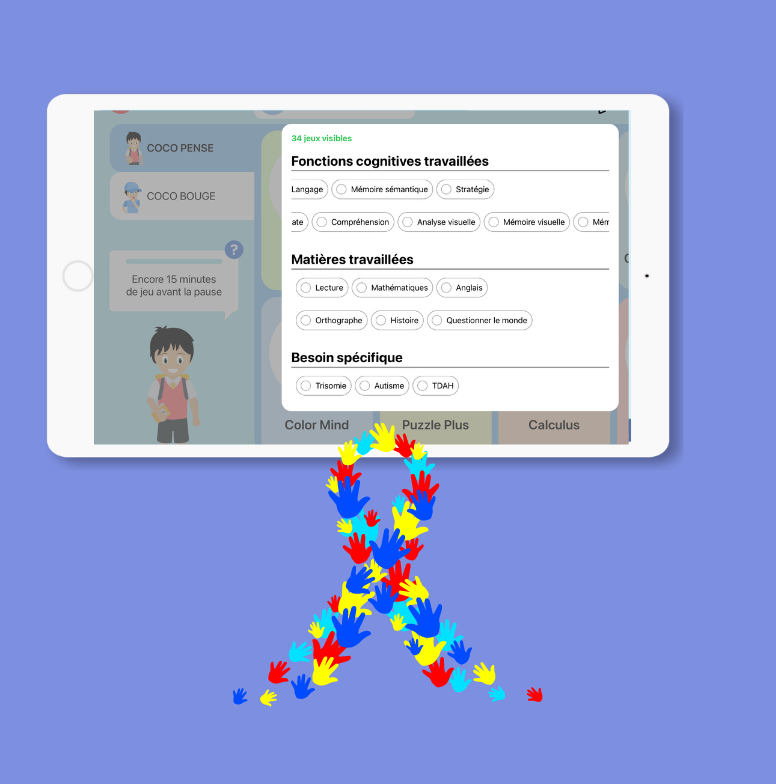
These COCO THINKS and COCO MOVES features are designed to provide holistic support for children with ADHD, specifically targeting challenges related to inattention, impulsivity, hyperactivity and intrusive thoughts. By combining educational activities, active breaks and relaxation techniques, these programs aim to help children develop essential skills to better manage their ADHD and improve their general well-being.
The advantages of “Coco Pense et Bouge” are numerous. This program helps children with ADHD in several ways:
- Reducing intrusive thoughts: teaches children strategies to reduce the impact of unwanted thoughts.
- Improved concentration: By combining physical activities, it helps to improve children’s concentration and attention. You can now sort games by specific needs: ADHD, Autism, DYS or Down’s syndrome. This filter will make the program easier and more intuitive to use.
- Boosting self-confidence: By overcoming intrusive thoughts, children develop greater confidence in their abilities. Children feel better after taking the compulsory sports break every 15 minutes of screen time. By being more serene, they feel better about themselves and their bodies, which boosts their self-confidence. Which is essential!
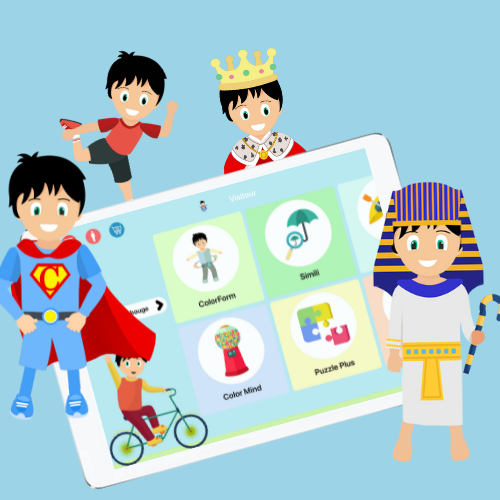
Practical tips to help a child reduce intrusive thoughts
Intrusive thoughts can be particularly confusing for children and those around them. For parents and educators of children with ADHD, understanding how to support a child struggling with intrusive thoughts is essential.
How to Support Children with ADHD on a Daily Basis
Helping a child reduce intrusive thoughts takes commitment, patience and the right resources. By following these practical tips and using complementary resources, parents and educators can play an essential role in improving the quality of life of children with ADHD. Open communication and understanding are the keys to helping these children overcome their challenges. Supporting a child with ADHD who struggles with intrusive thoughts can be a challenge, but there are effective strategies:
- Establish a stable routine: Children feel more secure and less anxious with a consistent daily routine.
- Give clear instructions: Clear, concise instructions help avoid confusion.
- Encourage breaks: Offering regular breaks can help reduce agitation and calm intrusive thoughts.
The importance of communication and patience
Open communication and patience play a crucial role in supporting children with ADHD and intrusive thoughts:
- Active listening: Listen to the child’s concerns without judgment to create a space of trust.
- Encourage emotional expression: Children need to know that it’s okay to share their emotions, even the most negative ones.
- Practice patience: Progress can be slow, and patience is essential to help a child overcome intrusive thoughts.

Additional resources for families and teachers
Families and teachers have access to valuable resources to support children with ADHD and intrusive thoughts:
- Specialized therapy: Cognitive-behavioral therapy (CBT) can be beneficial in helping children manage intrusive thoughts.
- Support groups: Joining a local or online support group allows parents to share their experiences and get advice from other families.
- Training for educators: Teachers can benefit from training in managing students with ADHD.
Associations that can help
- Association TDAH France: This association offers information, support groups and resources for families affected by ADHD in France.
- Fédération Française des Associations de Parents d’Enfants avec Troubles du Déficit de l’Attention avec ou sans Hyperactivité (Fédération TDAH France): This federation brings together several regional associations and offers support to families across the country.
- Child and adolescent ADHD reference centersThese centers, located in several regions of France, can provide specialized assessment and advice for children and adolescents with ADHD.
- ADHD health network: Some health networks in France specialize in ADHD and can offer support services to families.
- Association HyperSupers – TDAH France This association aims to raise awareness and support families affected by ADHD and hyperactivity.
- Troubles Anxieux et de l’Attention (TACA ): Although originally founded in the U.S., this organization offers online resources and support groups for parents of children with ADHD and anxiety disorders, including those with intrusive thoughts.
- Adult ADHD Association This association is also for adults with ADHD, but can provide useful information and resources for parents.
- Local psychiatrists, psychologists and child psychiatrists: It can be beneficial to consult local mental health professionals specializing in ADHD and anxiety disorders for individualized support.
- Local support groups: Look for support groups for parents of children with ADHD in your area, as they can offer a valuable support network and practical advice.
Don’t forget that finding support and resources specific to your region can be particularly useful, as services and organizations can vary according to geographic location. It is also important to consult a healthcare professional
for medical advice specific to your child’s situation.
Other articles that might interest you:
Effective Strategies for Managing Hyperactivity and Impulsivity at Home and at School.
Hyperactivity is characterized by excessive motor activity and difficulty sitting still or concentrating on a given...
How to Create a Balanced Screen Time for Your Children.
Excessive screen use can have many negative consequences for children's health. On a physical level, this can lead to...
How can tablets be integrated into kindergarten learning?
Kindergarten education is rapidly evolving to meet the changing needs of students and society. The integration of...


